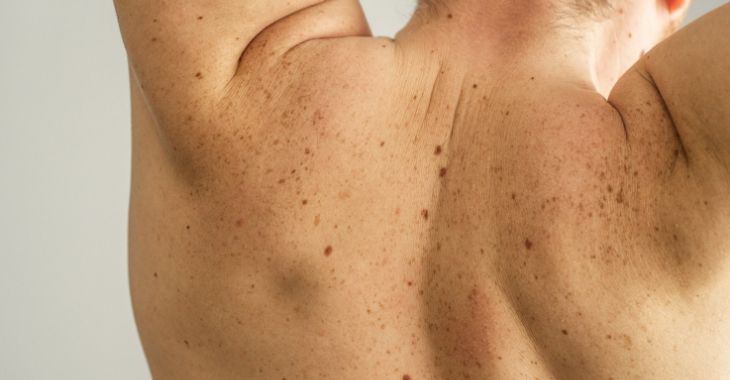How to Perform Skin Cancer Self-Exams

It is estimated that one in five people will develop skin cancer by the age of 70. Like most cancers, treating skin cancer has a higher rate of success when caught in the early stages. Performing a self-exam for signs of skin cancer is one of the best ways to detect early-stage skin cancer. Here is how to check for possible skin cancer on yourself and your loved ones.
Self-exams for skin cancer should be performed once a month. While skin cancer is more likely to be on areas normally exposed to the sun, that is not always the case. It is important to do a complete head-to-toe exam. This is how to complete your exam and what to look for during your monthly checks.
- When performing your exam, you are looking for any changes in your skin, including irregularities in moles or new lesions.
- Start with your face and head. Check your nose, mouth, ears and scalp – use a mirror to check the areas you cannot see or have a family member exam those areas.
- Examine your hands, looking between the fingers, on the palms and by the fingernails.
- Stand in front of a mirror and examine your arms and arm pits, raising your arms over your head.
- View your torso front and back – women should lift and move breasts for a full exam.
- Check the front of your pelvic area, legs and the top of your feet, then the back of all with a mirror.
- Use a mirror to check genitals and buttock area.
If you perform this exam every month, you can catch any skin abnormalities right away. Schedule an appointment with a dermatologist if you find any concerning growths to get a diagnosis and treatment.
Posted on behalf of:
Medical Dermatology Specialists
5730 Glenridge Drive, Suite T-100
Atlanta GA 30328
(404) 939-9220
The information provided on this website, including text, graphics, images, and other materials, is intended solely for informational purposes and should not be used as a substitute for professional medical advice, diagnosis, or treatment.

)